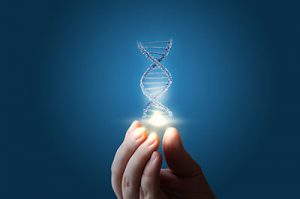Aging is a condition everyone experiences, and the effects of aging can be devastating on our health, especially in the form of age-related diseases such as diabetes, heart problems, fatty liver disease and other metabolic diseases. Along with these serious, and at times fatal, diseases, there are also the common and less life-threatening conditions that come with age such as graying hair, baldness and the dreaded wrinkles of the skin.
But believe it or not, the visible skin is not the only part of the anatomy that wrinkles. A new study from the University of Virginia School of Medicine has revealed that our cells also develop wrinkles. This means that the cells are not properly expressing our genes. The underlying problems of age-related diseases are part of the consequences of wrinkled cells in our bodies.
How Aging Affects Cells and DNA
According to the research, the location of our DNA makes a huge impact on its functionality. Located inside our cells, the DNA is impacted by the overall health of those cells. The genes that are located against the walls of the nuclear membrane are turned off.

Can Wrinkled Cells Be Treated?
Skin wrinkles are caused by a lack of collagen, which are insoluble and fibrous proteins in the body. It makes up about one-third of the body’s total proteins. Cell wrinkles are caused by a lack of a substance called lamins.
Lamins are important to your cell structure because they provide stability and strength. According to the National Institutes of Health (), the lamina is located in “the nuclear lamina, a mesh-like layer of intermediate filaments and other proteins that are attached to the inner membrane of the nuclear envelope.” This membrane, or envelope, controls what enters and exits the cell. By replacing lost lamin, wrinkles should be able to be removed from the cells.
If a viable vector could be developed to transfer lamin, a critical protein for healthy cells, then the threat of age-onset diseases could be delayed. Cardiac, liver, metabolic and other diseases could be prevented or at least stunted in development.
How Is Lamin Delivered?
For wrinkles on the skin, there are creams that can be easily applied. However, when dealing with the body on the cellular level, a different tactic must be developed for effective delivery. It is believed that engineering viruses could be the strategy for bringing lamin to cells.
Cell engineering is already being utilized for medical purposes to help treat patients. Delivering the engineered viruses to the liver is not a difficult task because the liver plays a major role in detoxifying the body. The hope is that once the lamin is delivered, the cells membranes will be smoothed out. The genes that are turned on will then be turned off, leading to normal, healthy cells. As a result, unwanted genes will be removed.
The Bottom Line
The nuclear membranes of cells wrinkle with time because lamin, the protein that gives structure and strength to the cell, gets depleted with age. This can greatly affect the genes inside the cell, making them turn on instead of remaining nonfunctional. When genes turn on, certain health problems can arise. Researchers theorize that by using an engineered virus as a delivery system, lamin can be provided for cells. This will prevent cell membrane damage and eradicate any ill-effects from previously existing damage. Using lamin as an anti-age product for cells could be a breakthrough for a healthier life.





